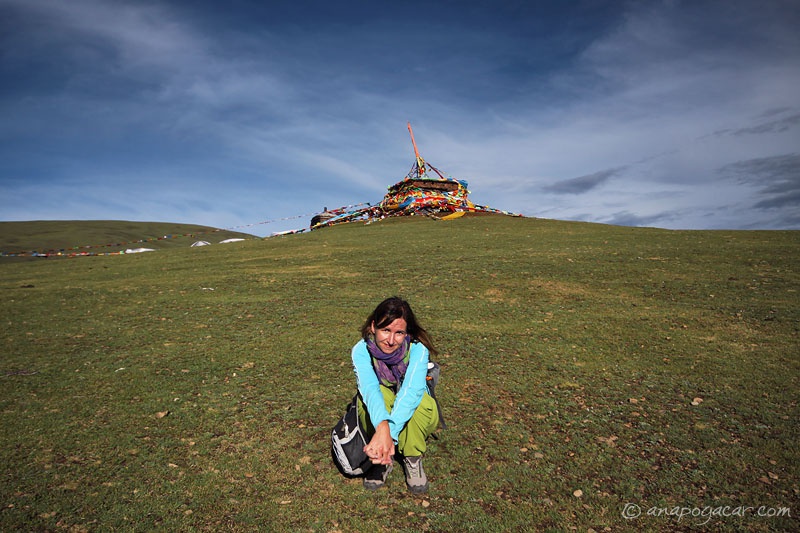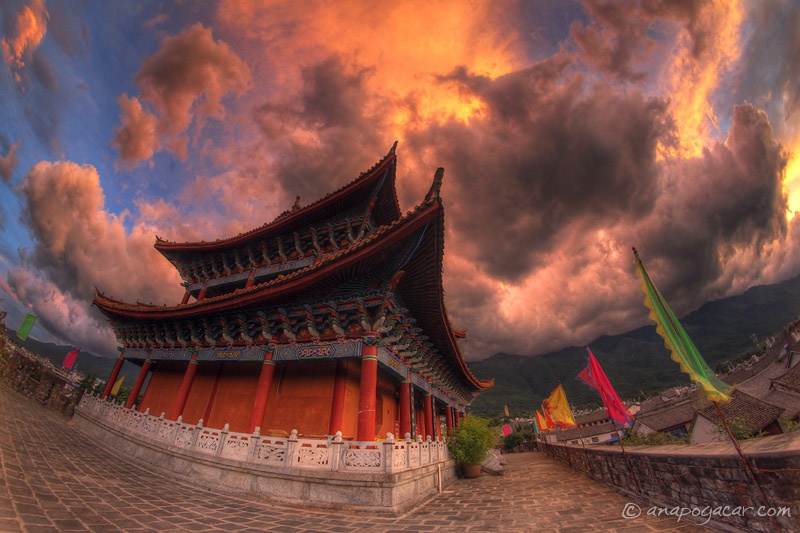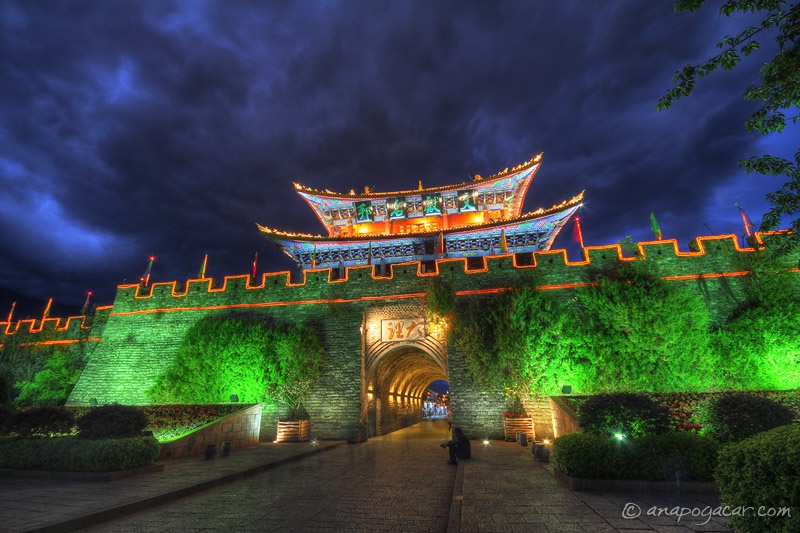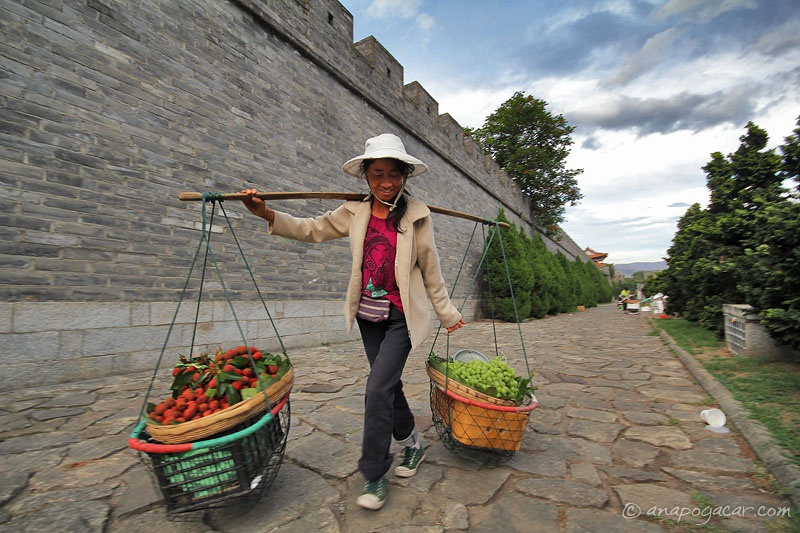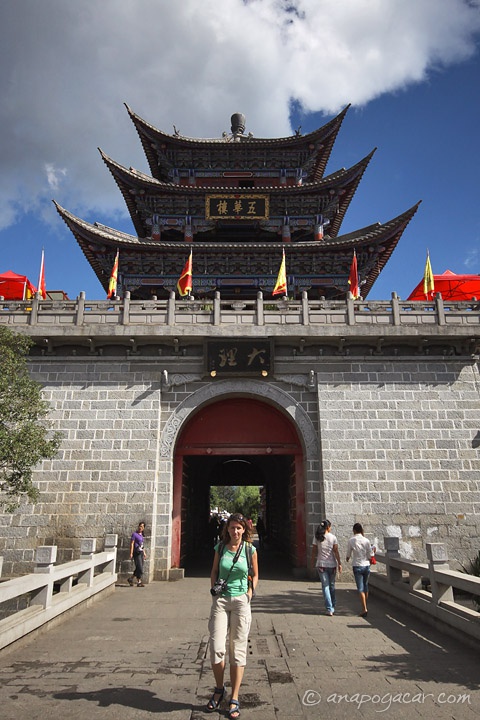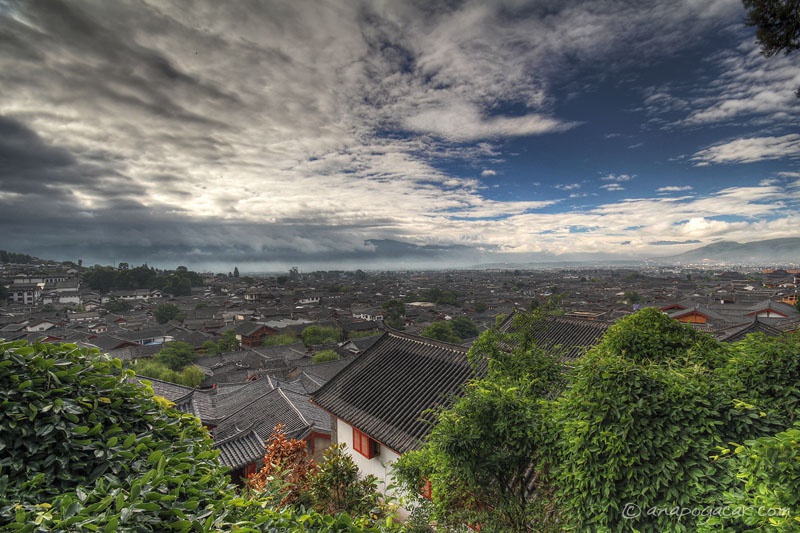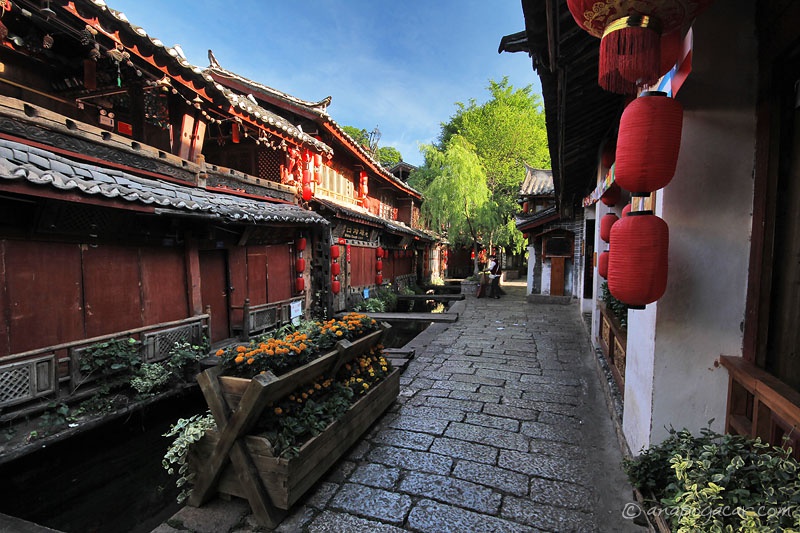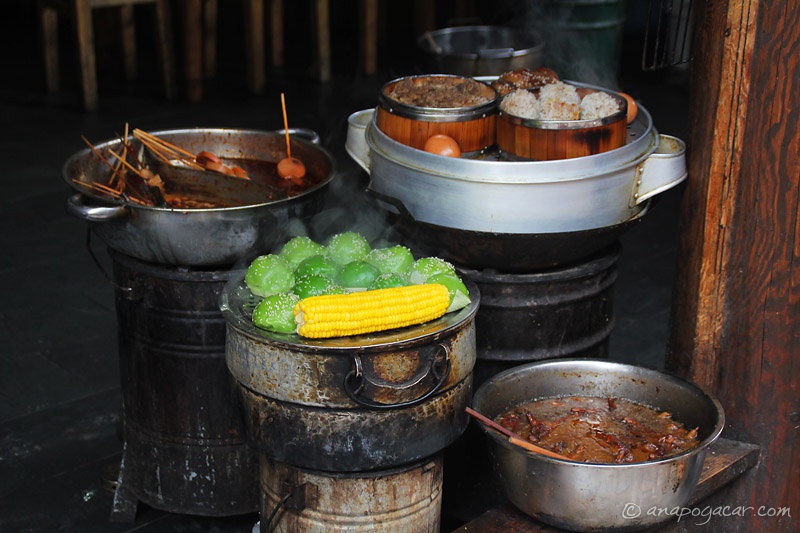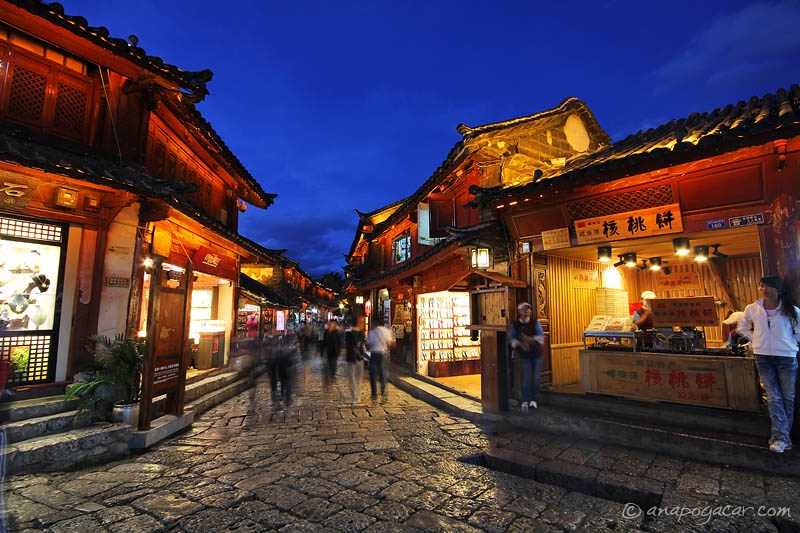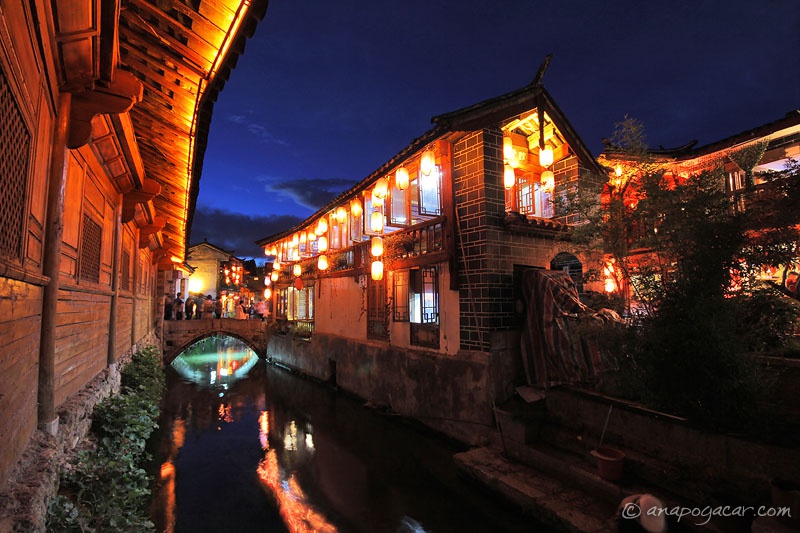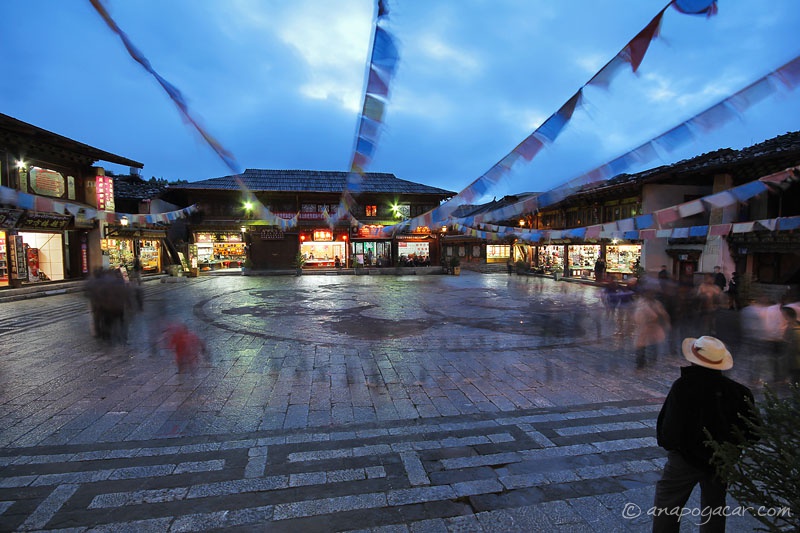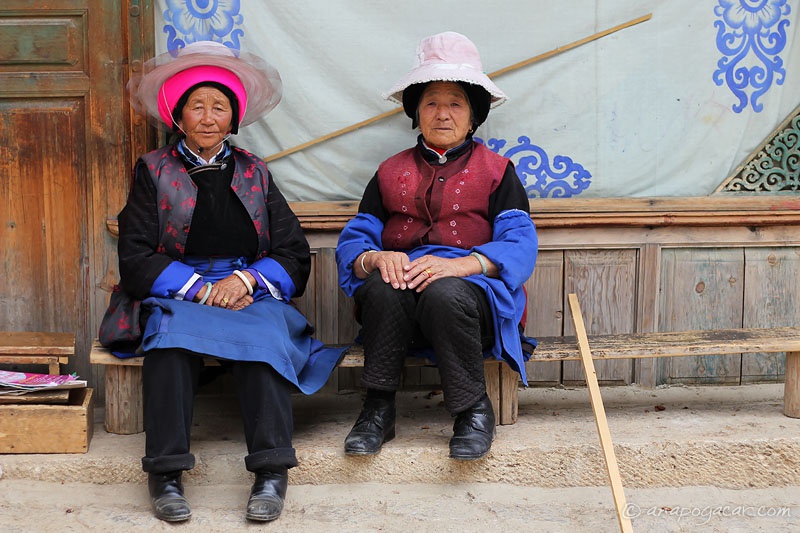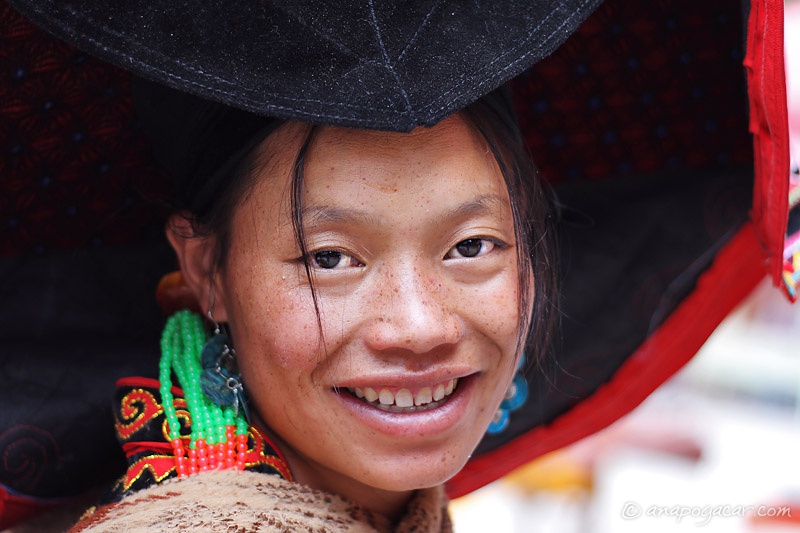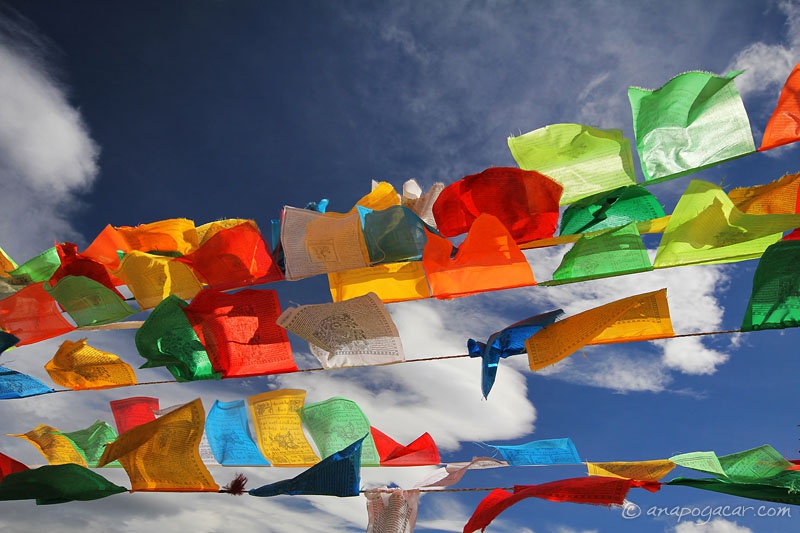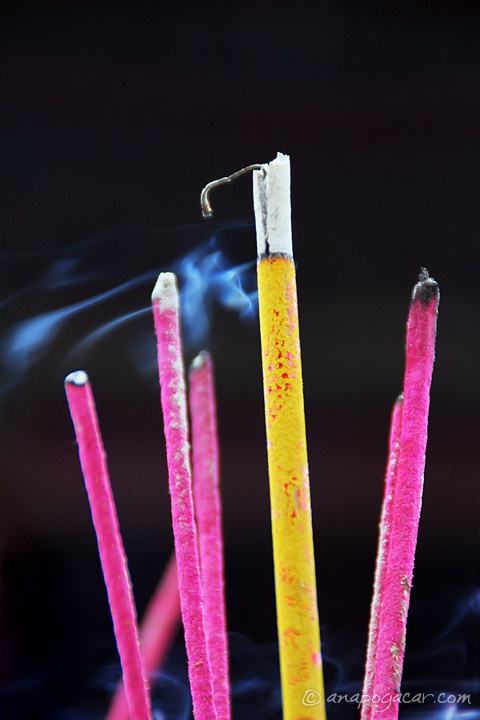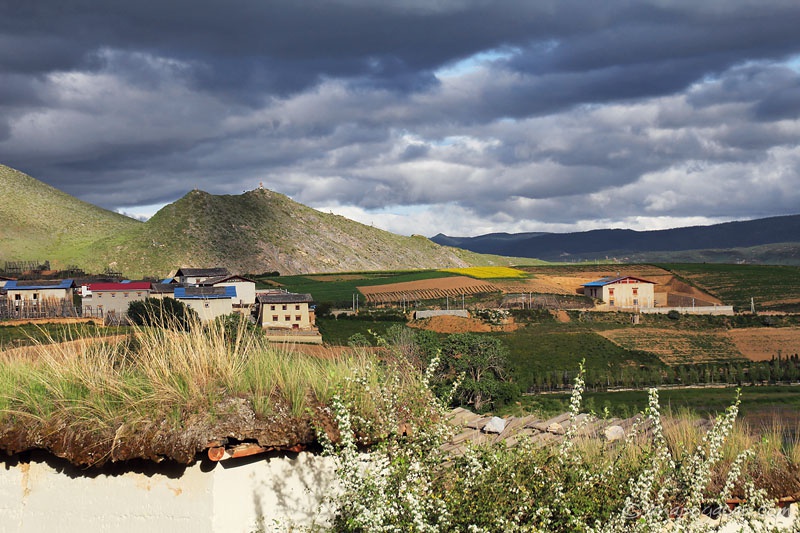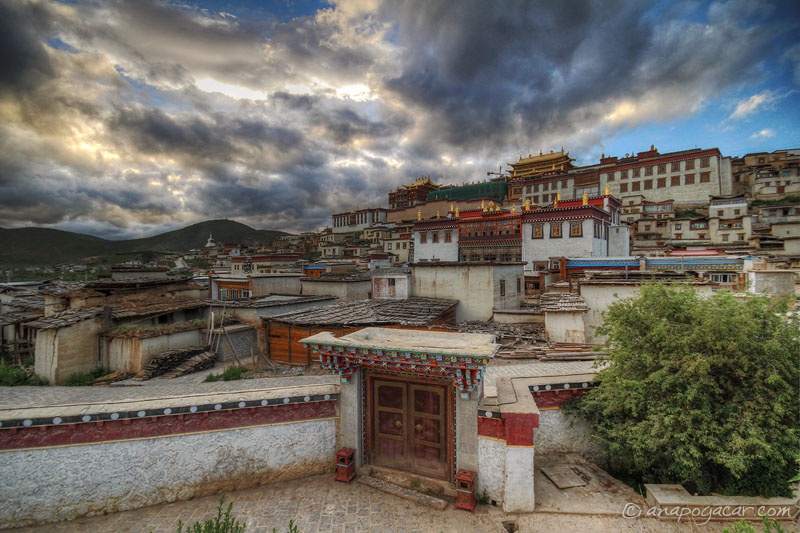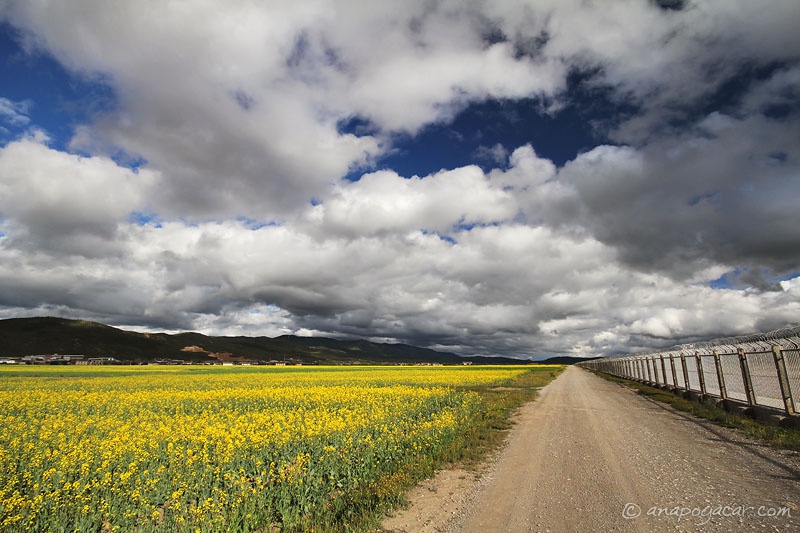Although the distances don't qualify as enormous, the bumpy winding and sometimes non-existent roads make traveling painfully slow, and in addition public transport is quite limited compared to other parts of the country. We had to break the journey in Xiangcheng, some eight butt-shaking hours north of Shangrila, after climbing over a pass enveloped in fog and plunging into a deep fertile valley full of yellow and green patches of fields and Tibetan villages.

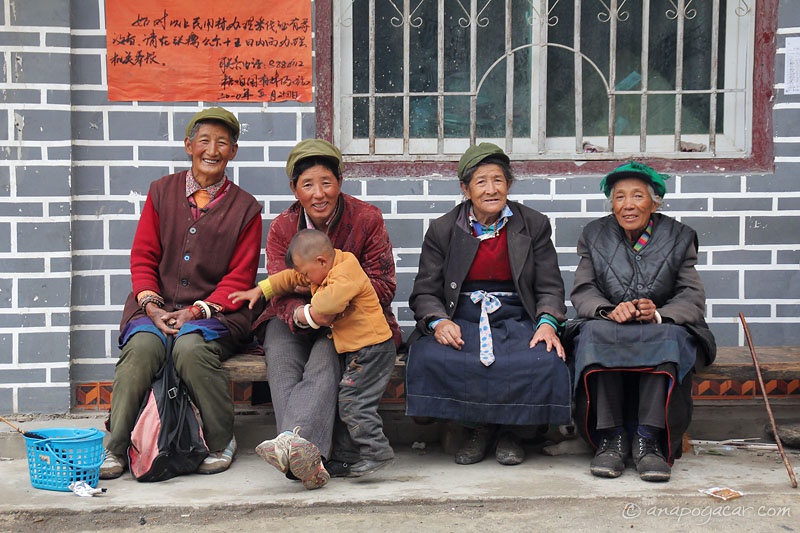
We spent the afternoon wandering around the predominantly Chinese town and climbing the nearby hill with a gompa (Tibetan monastery) and great views over the valley.
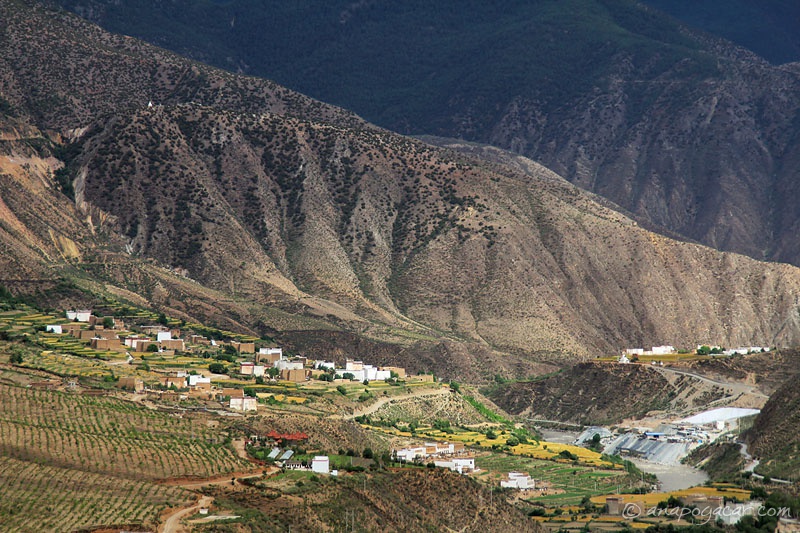

Our lodging for the night was in a lavishly decorated guesthouse. This has to be one of the most colorful rooms I've even slept in!
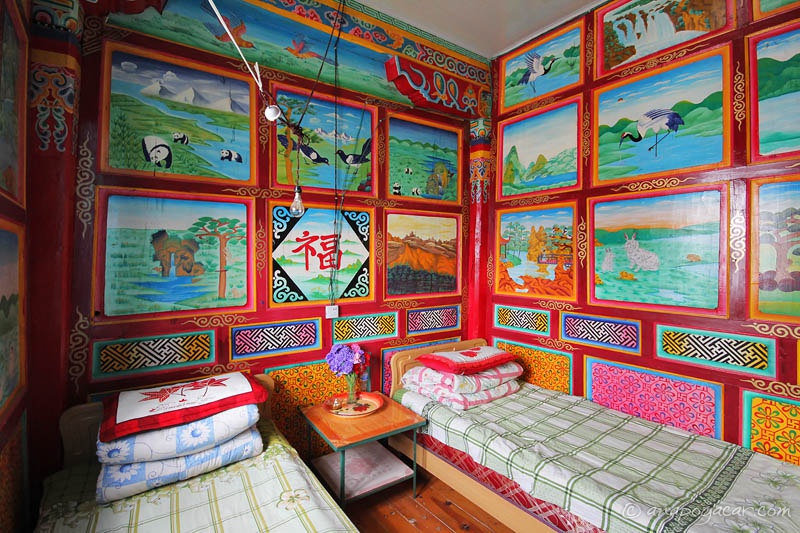
Onward travel proved to be tricky. Nobody would sell us tickets to Litang; all we got from the people at the bus station was a cold stare and "mei you" (a phrase that one hears all the time andcan mean anything from "don't have" and "can't do" to "fuck off". Even Lonely Planet says foreigners regularly have a hard time getting a bus out of there. Well, on that particular day there were four foreigners in town, all eagerly waiting to head north, and we ended up crammed in a minivan at 5.30 a.m., paying an exaggerated price to spend the next five hours on a cold, all-windows-down but very scenic ride.
At the altitude of 4200 meters, Litang was exhilarating in several meanings of the word. Before coming here we had been hoping to see a sky burial, a Tibetan funeral in which the dead body is taken out to the grasslands where it is partly cut and left for the vultures to devour. And right upon arrival we were informed by the nice hotel owner that there was a sky burial scheduled in another hour and that she could take us there in a few minutes. We didn't hesitate; and for the next few hours we were completely fascinated by this primitive yet very logical, back-to-the nature ritual. No relatives were present, just a few friends and a so-called "cutter" who does the gruesome work of cutting the body and later crushing the bones so that nothing is left.
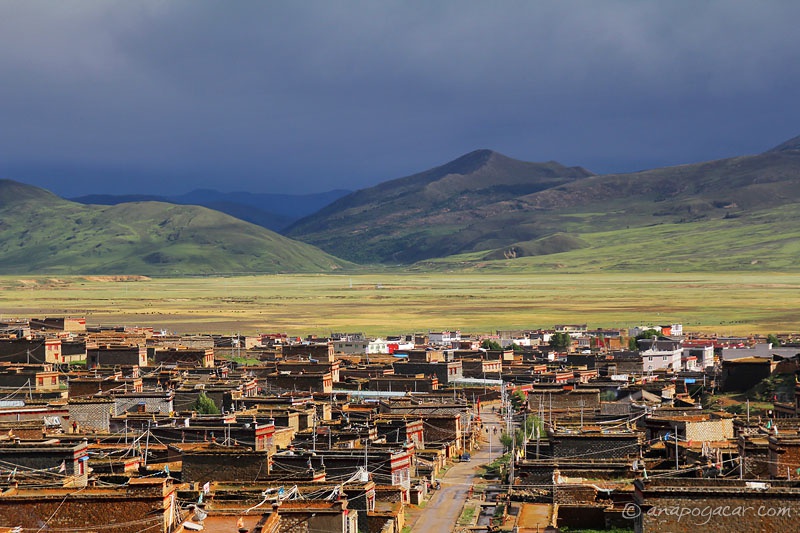

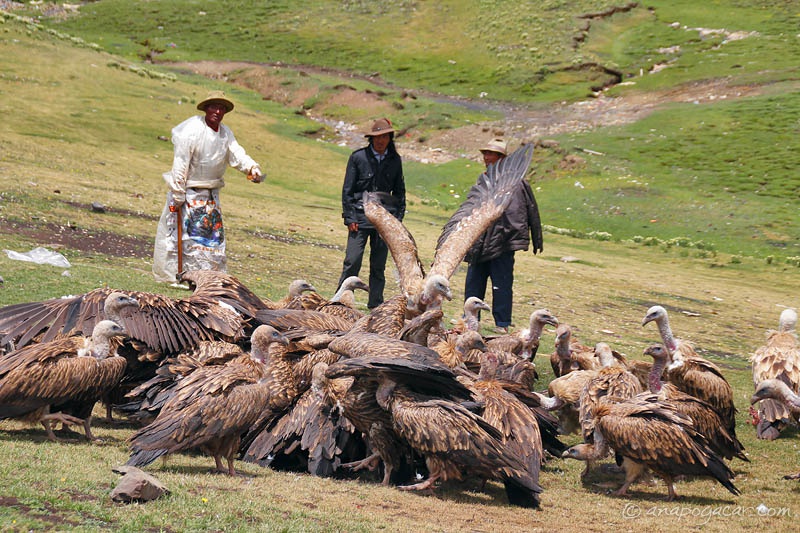
Practically speechless we returned to town and spent the rest of our stay there enjoying the fresh air, beautiful views from the gompa and, mostly, meeting and talking with the locals, Tibetans who against our expectations turned out to be the nicest, friendliest people so far. They do a kora every day, a clockwise walk around a sacred site, usually a monastery or stupa, spinning their prayer wheels. It was such a pleasant change to actually get smiles from people! They greeted us with "tashi delek" everywhere we turned, they were all smiling, and they were eager to have their photo taken. All that makes Litang one of my favorite places on this trip.



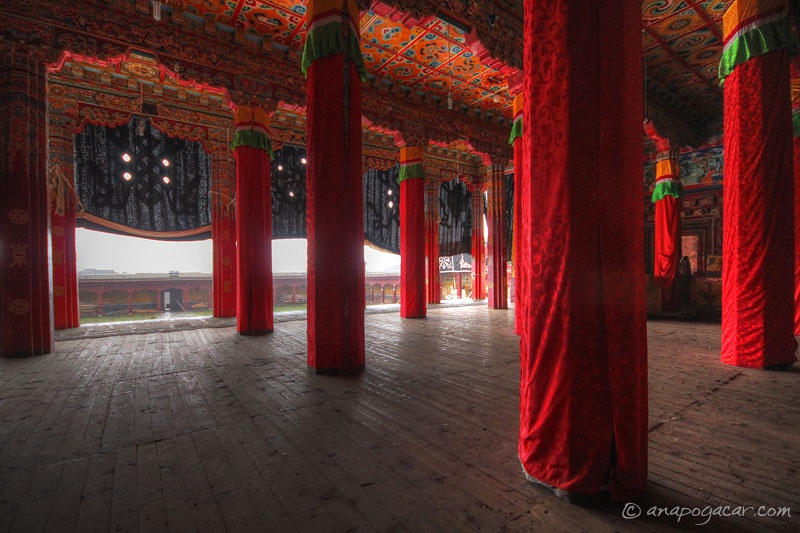
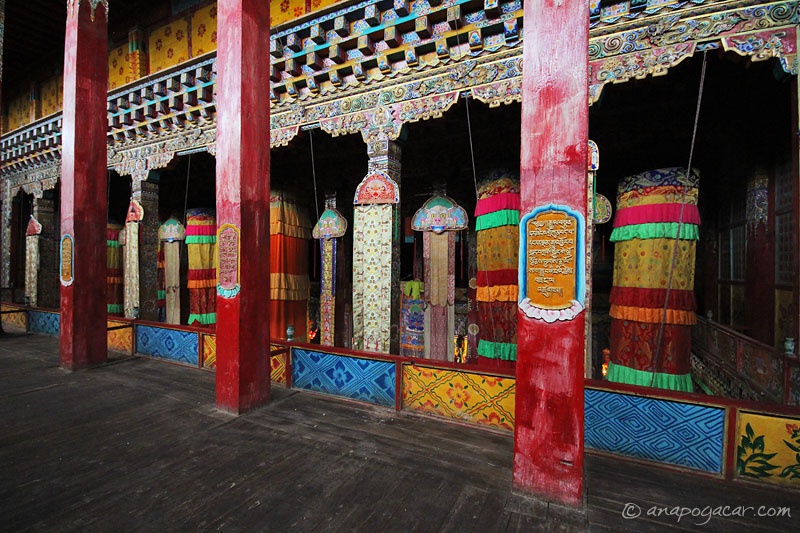

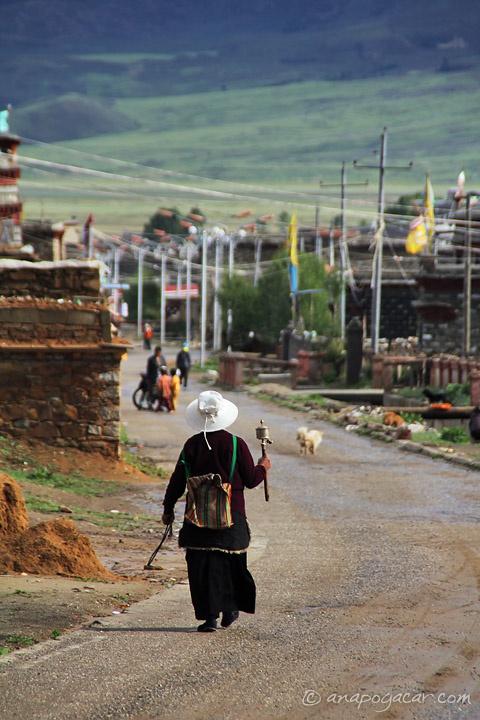

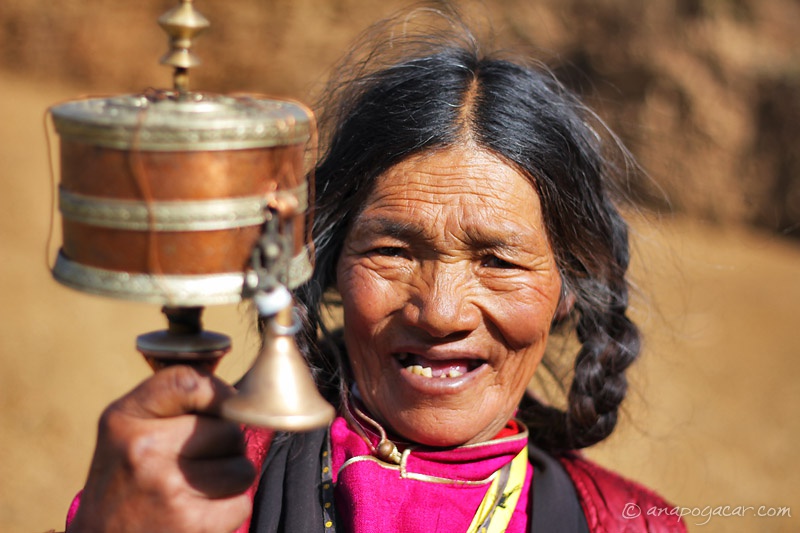



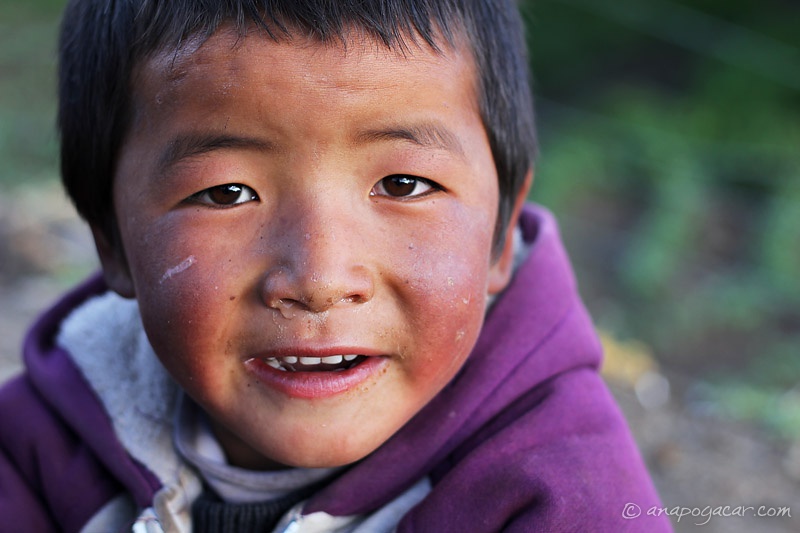
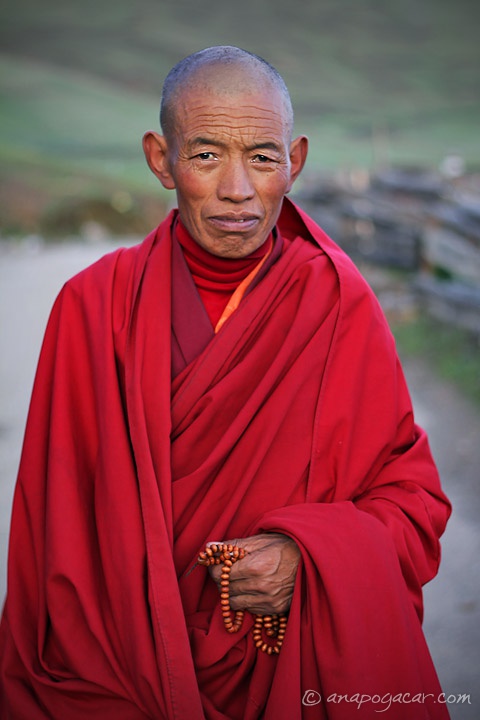
But this was just the beginning...
